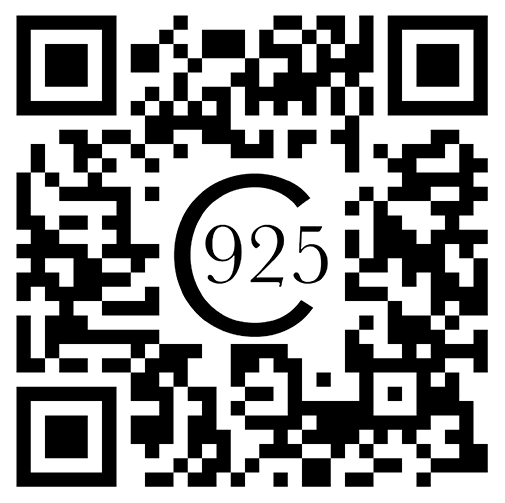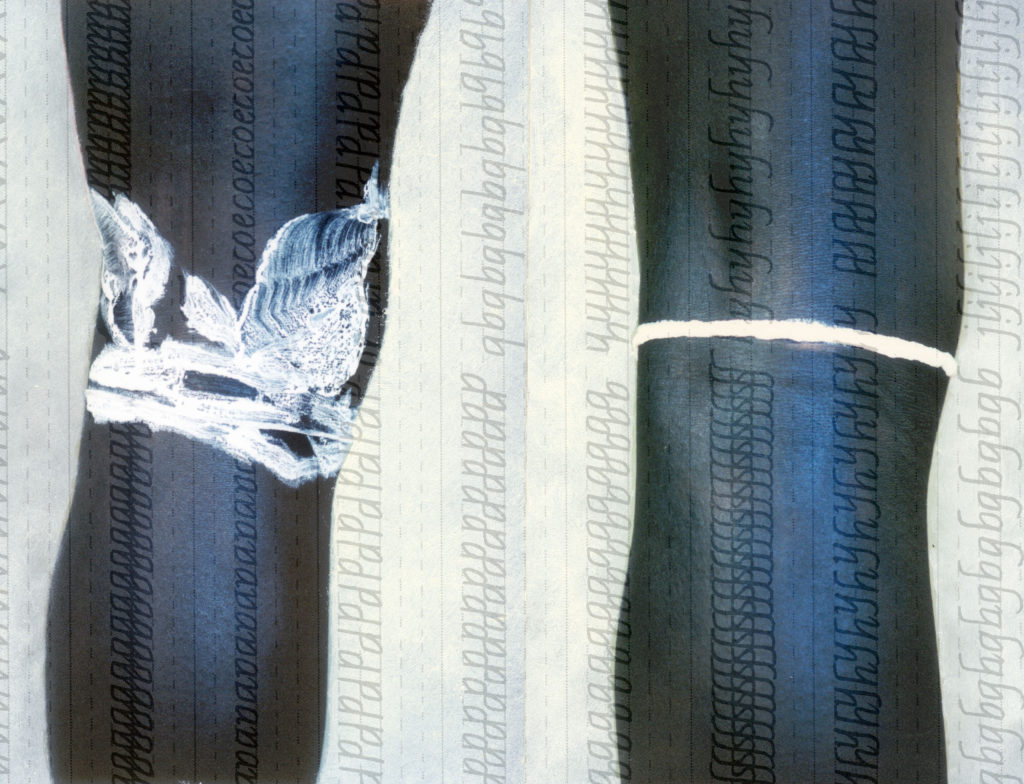The knee can sprout wings and fly. Ask any runner. Being curious about what a string, wet with paint would do on a knee joint, I begin a process of investigation. I first apply a circle of wet paint, as can be seen on the right leg. The model, a dancer, moves her knee and leg in every direction she can, resulting in an abstract design resembling wings. The knee looks as if it might take flight. Hermes, the Greek messenger god could relate. Although he sported wings on his heels, the urgency to deliver a message spurred him forward.
For years, I created range of motion images on most joints of the body. One day, I find an old McGuffey Reader from the 1800s at a garage sale. The workbook that shows the ideal way to form letters fascinates me. I decide to superimpose American calligraphy on a dancer’s legs because the repeated units of script represent another discipline that also requires repetitive muscular conditioning to achieve what looks like spontaneous beauty. The conjoined black letters on dark skin appear to be meaningful tattoos, perhaps Polynesian or Asian, as various viewers have suggested to me. The gray script on white registers as textured decoration until the viewer examines them closely to discern elegant conjoined individual letters.
Both the graceful forms created by the knee’s range of motion and the calligraphy look spontaneous, but are the result of painstakingly conditioned muscles, daily stretched and exercised with either dance moves or handwriting. The flowing, curved shapes of back-to-back letters in this 1880s McGuffey’s Reader workbook required untold hours of practice to give the result of natural-looking script. Usually we extol elegant Asian or Islamic calligraphy, but our home-grown variety shares a sublime beauty. And like Hermes, this prolonged effort achieves the purpose of giving and receiving messages in our notes and letters.
As the first mass attempt to teach literacy in this country, McGuffey’s Readers offered a standard national education. My aunts were raised on a homestead by my pioneer grandparents. They walked miles to reach a one-room schoolhouse and learned to read and write in the early 1900s from McGuffey’s Readers. One aunt earned money by leading mule and horse trains on foot in and out of the Olympic mountains, guiding miners, loggers, hunters and campers. One became a teacher, while two became nurses; the first of my family to attend college and fulfil my grandparents’ immigrant dreams. Learning from McGuffey’s Readers, like having strong knees, allowed them to succeed.
Whereas the burst of white abstraction on the left knee attracts the eye, the repeated vertical lines of calligraphy form a dispersed field to visually balance the bright design. They create a successful art composition that recently won first place in a juried art competition. I combine seemingly incongruent elements, and make them aesthetically function together. This is an artist’s delight, both in concept and in visualization. In making this work, I feel joy and lightness, a fanciful flight of my imagination.
Kaethe Kauffman’s one-person exhibit, La Foresta, is at Castello Gallery 780 in Venice, Italy, April 19 to June 23, 2024. Castello Gallery 780 is affiliated with the Venice Biennale art fair.

